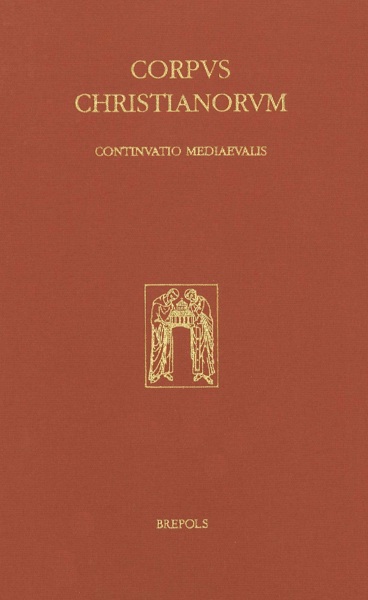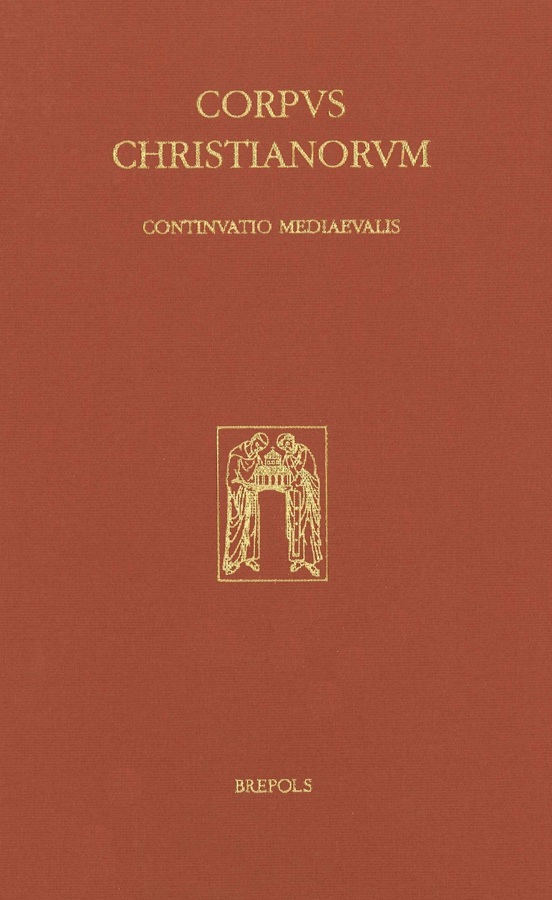
Wilhelmus Iordani, Ioannes Rusbrochius
Ioannes Rusbrochius, De ornatu spiritualium nuptiarum Wilhelmo Iordani interprete
Kees Schepers (ed)
- Pages: 408 p.
- Size:155 x 245 mm
- Language(s):Latin, English
- Publication Year:2004
- € 200,00 EXCL. VAT RETAIL PRICE
- ISBN: 978-2-503-05079-9
- Hardback
- Available
«Le résultat de la coopération Desoer-Schepers mérite sa place dans la galerie splendide qu'est Corpus christianorum.»
G. Hendrix dans: Revue d'Histoire Ecclésiastique (2005), 3, 405, p. 1172-1173.
"Cette édition de la traduction jordaensienne de L’Ornement des noces spirituelles n’est pas seulement de la plus haute importance par sa signifi cation relativement à la tradition textuelle de Ruusbroec, mais ses qualités intrinsèques en font un ouvrage indispensable." (F. van Elmbt in: Le Moyen Âge, 114, 1, 2008, p. 196)
"Met deze editie heeft Kees Schepers voortreffelijk werk geleverd. (...) Het belang van deze uitgave mag niet worden onderschat." (H. Noë, in: Tijdschrift voor Nederlandse Taal- en Letterkunde, 122, 2006, p. 265-267)
Die geestelike brulocht is the Middle Dutch opus magnum of Jan van Ruusbroec (1293-1381), the Flemish mystic who lived in Brussels as priest at St.-Gudule church before retreating into the Forêt de Soignes to become the first prior of the regular canon priory of Groenendaal. In the Brulocht Ruusbroec describes from experience the three stages of the mystical life, culminating in the contemplative life. First known in and around Brussels, and later throughout the Low Countries, Ruusbroec soon became renowned up to the foot of the Alps. The dissemination of Ruusbroec’s texts was greatly enhanced by three early Latin translations of Willem Jordaens († 1372), a confrere at Groenendaal. His translation of Die geestelike brulocht in particular, as stylistically exuberant as it was accurate with regard to its mystical-theological content, gave Ruusbroec an immense stature. Willem Jordaens’s De ornatu spiritualium nuptiarum was soon disseminated in Brabant, France, England and Italy, even reaching present-day Poland. This early distribution was, it seems, brought to a halt by repeated condemnations from c. 1400 on by the Paris chancellor Jean Gerson (1363-1429), the irony being that it was De ornatu that brought Ruusbroec’s Geestelike brulocht to Gerson’s attention. The value of the text was rediscovered by Jacques Lefèvre d’Étaples, who, through the 1512 Paris edition of De ornatu by Henri Estienne, used it in the spread of Christian humanism in sixteenth-century France.





